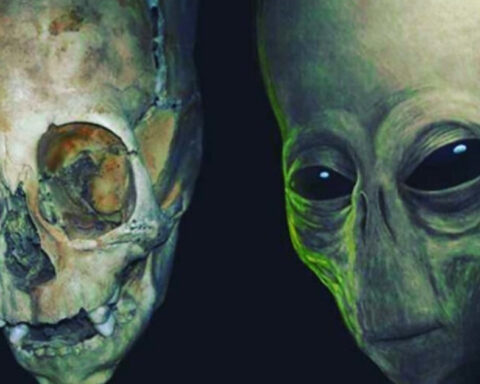Two experienced Russian scientists from the Soviet Academy of Sciences, Mikhail Vasin and Alexander Sherbakov, suggested that the Moon is not a natural satellite. It isn’t even mentioned by any ancient civilization.
The Moon, according to scientists, is hollow and protected by an armored and shock-absorbing shell.
In the 1960s, two scientists published an article in the journal Sputnik claiming that the Moon is a giant hollow planetoid, not a natural satellite of the Earth.

It was founded by a technologically advanced civilization that positioned it in Earth orbit many centuries ago.
At first glance, a theory could seem a little far-fetched, but it would explain many of the mysteries surrounding “our” satellite.
The New Moon Is it true that this is a man-made satellite?
The Moon’s warp, according to the article, must be supported without breaking by certain unusual internal characteristics. A huge inner castle is one of them.
Artificial satellites, according to scientists, are normally hollow and massively immune to the variations of space.

“The base had a double layer, a strong armored shield about 30 kilometers thick and a less compact shell, a thinner layer around 4.5 kilometers thick, over it,” says the author.
The bulk of debris that enters the atmosphere is destroyed, but not the Moon. This would clarify why the surface has so many craters in contrast to Earth.
Since the Moon originated from such a faraway place in the cosmos, it was exposed to far more impacts than the Earth.
Another issue is the superficiality of the effects; they are all trivial. This phenomenon is explained by the fact that objects collide with a buffer layer before coming into contact with an impenetrable defensive shield.
The effect will only affect the 4.5-kilometer crust since the armored layer is 30 kilometers thick. On the Moon, the diameter of craters is estimated.
The discovery of lava seas on the Moon is another strange phenomenon. According to some experts, the lava came from inside the satellite. Given that it has long been thought of as a cold body incapable of generating heat, anything seems unlikely.
The Moon’s craters signify a potentially long journey to your current position.

Another theory claims that meteorites exploded on the surface, causing lava to form. The problem is that it seems to originate from inside. According to Vasin and Sherbakov, these waters came from the Earth’s interior, but not in the way we think.
What is an ancient civilization’s legacy?
Experts believe that the substance was produced from the inside out by someone or something made of lava-like rocks and materials. This paste was used to repair meteorite damage, resulting in areas that were “cleaner” and darker than others.
This may account for the gravitational changes observed in certain Moon sectors. The structure and weight of these “seas” will provoke them.
It’s important to note that the notion that the Moon is a man-made satellite is not new. In fact, no reports of the Moon have been made since antiquity.
The Pelasgians lived on Earth “before the Moon appeared in the sky,” according to Aristotle in the Constitution of Tages.
According to ancient Tibetan texts, the Moon did not exist in the vanished continent of Gondwana, where ancient Lemuria was found. Inmanuel Velikovsky, a Russian scholar, claimed in the 1950s that many ancient civilizations had no consistent records of the Moon.
Should we assume that there is sufficient evidence to call the Moon’s existence as a natural satellite into question? If this is valid, anything related to the various countries’ lunar exploration should be challenged. What did they find in that spot, exactly?
Source: UFO Spain






